
Fundamentals
The phrase “African Cultures,” when viewed through the unique lens of Roothea’s ‘living library,’ transcends a mere geographical grouping. It offers a profound exploration of the diverse human expressions, ancestral wisdom, and communal practices that have blossomed across the African continent and its diaspora for millennia. This term signifies the collective inheritance of traditions, belief systems, artistic expressions, and social structures originating from Africa, each distinct yet interconnected by shared historical currents and a foundational reverence for community and lineage. It is a vibrant, living archive of human ingenuity and spirit.
For Roothea, the meaning of African Cultures is inextricably linked to the rich heritage of Textured Hair. Hair, in these contexts, is far more than a biological outgrowth; it is a profound symbol, a living canvas, and a historical record. It carries the stories of kinship, spirituality, social standing, and resilience.
The way hair is tended, styled, and adorned reflects a deep connection to the earth, to community, and to the divine, echoing practices passed down through generations. Understanding African Cultures, therefore, involves recognizing the intricate ways in which hair has served as a primary conduit for cultural transmission and identity preservation across time and space.
African Cultures, within the Roothea ethos, represents a dynamic inheritance of traditions where textured hair serves as a central, living symbol of identity and ancestral connection.
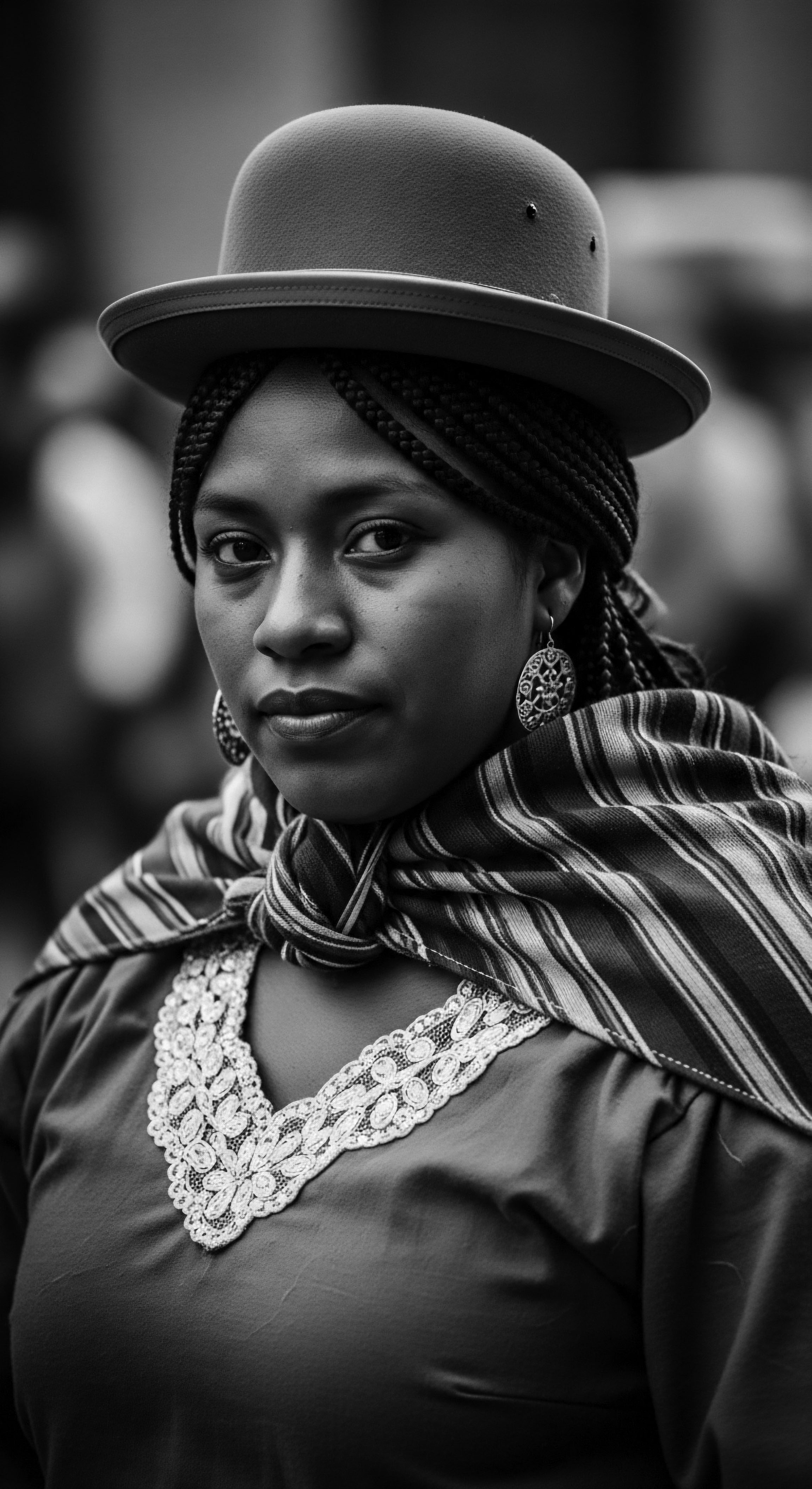
The Roots of Adornment and Communication
Ancient African societies, from the Nile Valley to the expansive West African kingdoms, held hair in high esteem. Archaeological evidence, such as Stone Age paintings in the Tassili Plateau of the Sahara dating back to 3500 BCE, provides early depictions of cornrows, demonstrating the long-standing artistry involved in hair styling. These practices were not solely for aesthetic appeal; they were deeply embedded in daily life and spiritual beliefs.
Hair served as a visual language, communicating a person’s age, marital status, ethnic identity, wealth, and social rank. The very act of hair grooming was a communal ritual, fostering bonds and transmitting generational knowledge.
In many traditions, the head was considered the most elevated part of the body, a sacred portal for spiritual energy and a connection to the divine. Consequently, the care and adornment of hair were sacred acts, believed to influence one’s spiritual well-being and connection to ancestors. Specific styles could signify a warrior’s readiness for battle, a woman’s fertility, or a community’s mourning. This deep spiritual and social integration of hair underscores its foundational role in the definition of African Cultures.

Early Expressions of Hair Heritage
- Ancient Egyptian Hairstyles ❉ Elaborate wigs and braids often signified high social status and religious devotion, with intricate adornments reflecting wealth and connection to deities like Hathor.
- West African Braiding Traditions ❉ Groups such as the Yoruba, Wolof, and Fulani developed complex braiding patterns that conveyed social signals, personal identity, and spiritual meanings within their communities.
- Maasai Hair Practices ❉ In East Africa, the Maasai wore dreadlocks, or “ojwang,” as symbols of strength, courage, and wisdom, revering hair as a sacred gift from the creator and adorning it with beads and feathers to represent tribal identity.

Intermediate
Expanding upon the foundational understanding, the concept of African Cultures, particularly through the lens of textured hair heritage, deepens into a narrative of profound resilience and adaptation. This exploration moves beyond mere aesthetic practices to acknowledge hair as a dynamic medium through which communities have asserted identity, resisted oppression, and maintained continuity amidst sweeping historical changes. The African continent, a cradle of diverse peoples, has yielded an extraordinary range of hair textures and corresponding care traditions, each a testament to environmental adaptation and cultural ingenuity.
The scientific aspect of African hair, often characterized by its unique helical structure and propensity for coiling, is not merely a biological classification; it is the elemental biology that underpins a vast repository of ancestral knowledge. This intrinsic structure, which provides natural volume and protective capabilities, also necessitates specific care rituals that have been refined over generations. The wisdom embedded in these traditional practices, such as the use of natural oils, butters, and herbs, often finds validation in modern scientific understanding of hair hydration, strength, and scalp health.
The evolution of African hair care, from ancient remedies to contemporary applications, mirrors a continuous dialogue between ancestral wisdom and scientific discovery.

The Tender Thread ❉ Ancestral Care and Communal Bonds
The communal act of hair grooming, stretching back thousands of years, stands as a cornerstone of African Cultures. These sessions were not simply about styling; they were intimate gatherings where stories were shared, histories recounted, and wisdom imparted across generations. Grandmothers, mothers, and aunties would meticulously cleanse, oil, and braid hair, passing down techniques and the understanding of specific botanicals. This shared experience strengthened familial bonds and reinforced community ties, making hair care a powerful social institution.
Traditional African hair care was holistic, deeply connected to the natural environment. Ingredients harvested from the land were utilized for their conditioning, cleansing, and protective properties. For example, shea butter, derived from the nuts of the shea tree, has been a staple across West Africa for centuries, revered for its moisturizing and emollient qualities that nourish textured hair and scalp. Similarly, various plant extracts and clays were employed for their medicinal and cosmetic benefits, reflecting an astute understanding of natural pharmacopoeia long before formalized science.
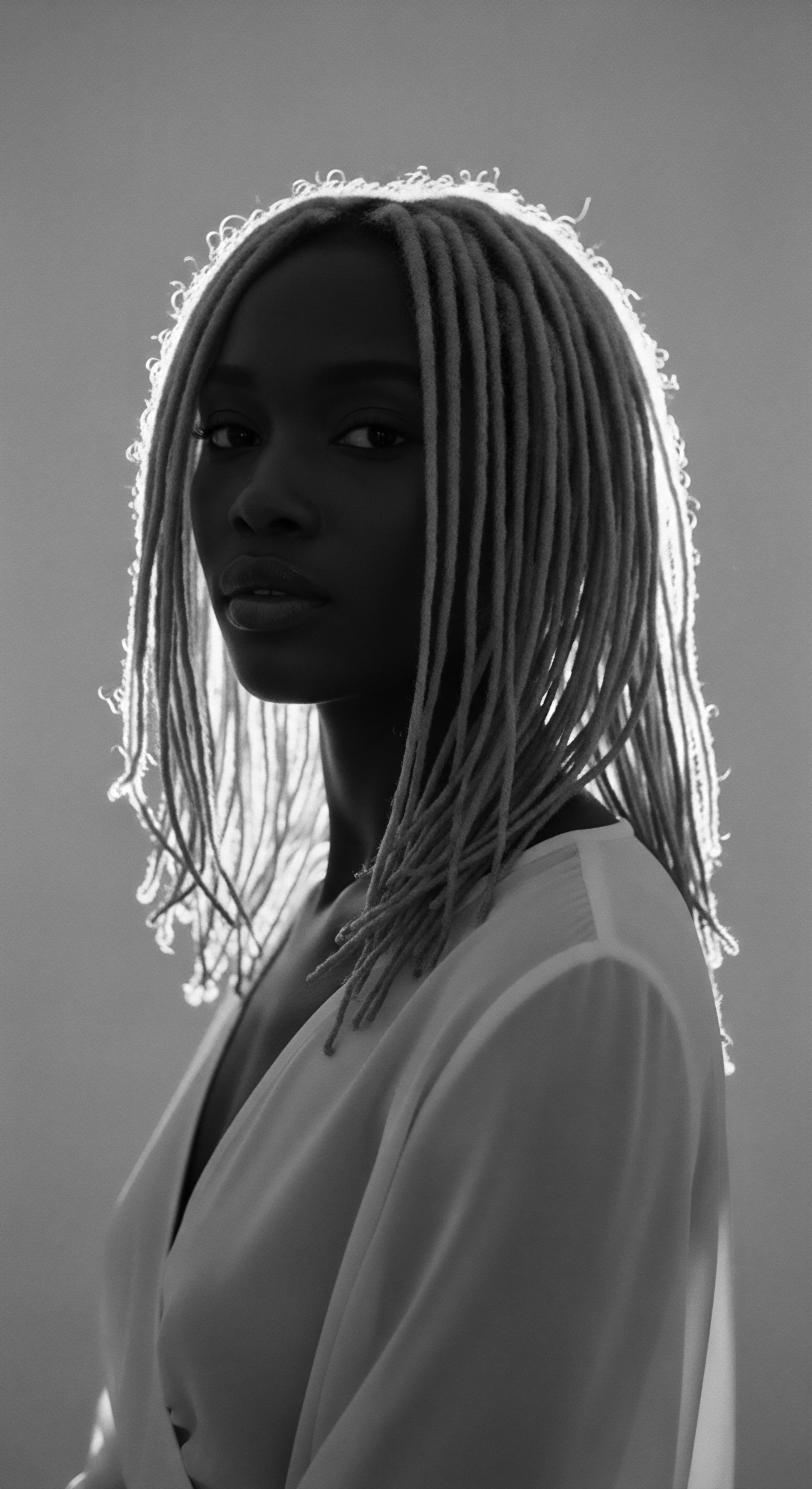
Ingredients and Their Historical Uses
The careful selection and application of natural elements formed the bedrock of ancestral hair care. These ingredients were chosen not only for their practical benefits but also for their symbolic and spiritual associations.
| Traditional Ingredient/Practice Shea Butter (Karité) |
| Cultural/Historical Significance Widely used across West Africa; a symbol of wealth and healing. Applied during communal grooming rituals. |
| Contemporary Hair Benefit (Echoes from Ancestry) Rich in vitamins A, E, and F, providing deep moisture, reducing breakage, and sealing hair cuticles. |
| Traditional Ingredient/Practice African Black Soap |
| Cultural/Historical Significance Originating from West Africa, made from plantain skins, cocoa pods, and shea tree bark. Used for cleansing body and hair. |
| Contemporary Hair Benefit (Echoes from Ancestry) Gentle cleansing properties, effectively removing impurities without stripping natural oils, promoting scalp health. |
| Traditional Ingredient/Practice Red Ochre (Otjize) |
| Cultural/Historical Significance Used by the Himba people of Namibia; a paste of ochre, butterfat, and aromatic resin. Signified connection to earth and ancestors. |
| Contemporary Hair Benefit (Echoes from Ancestry) Acts as a protective styling agent, offering sun protection and conditioning, while symbolizing cultural identity. |
| Traditional Ingredient/Practice Kukui Nut Oil |
| Cultural/Historical Significance Native to Hawaii and Pacific Islands, but its principles of light, penetrating oils for hair are mirrored in many African traditions. |
| Contemporary Hair Benefit (Echoes from Ancestry) A lightweight emollient that penetrates the hair shaft, providing moisture and reducing frizz without heaviness. |
| Traditional Ingredient/Practice These ancestral practices demonstrate a sophisticated understanding of hair's needs, predating modern cosmetology, grounding contemporary care in a rich heritage. |

Hair as a Chronicle of Survival
The transatlantic slave trade presented an unparalleled assault on African identities, with the forced shaving of heads being one of the first dehumanizing acts upon arrival in the Americas. This brutal act sought to strip enslaved Africans of their cultural markers and communal connections, reducing them to anonymous chattel. Yet, even in the face of such profound violence, the spirit of African Cultures endured through hair.
Enslaved Africans found covert ways to reclaim their heritage and communicate, often using their hair as a secret medium. A powerful example resides in the use of Cornrows. In regions like Colombia, enslaved people braided intricate patterns into their hair to create maps and convey escape routes to freedom. They would hide seeds or even gold within their tightly woven braids, ensuring survival during arduous journeys.
This covert practice highlights the ingenious ways hair became a tool of resistance, a silent act of defiance against oppression, preserving cultural memory and fostering collective liberation. The ability of cornrows to serve as a topographical guide, a hidden repository for sustenance, and a silent message system underscores the deep cultural and strategic intelligence embedded within these styles.
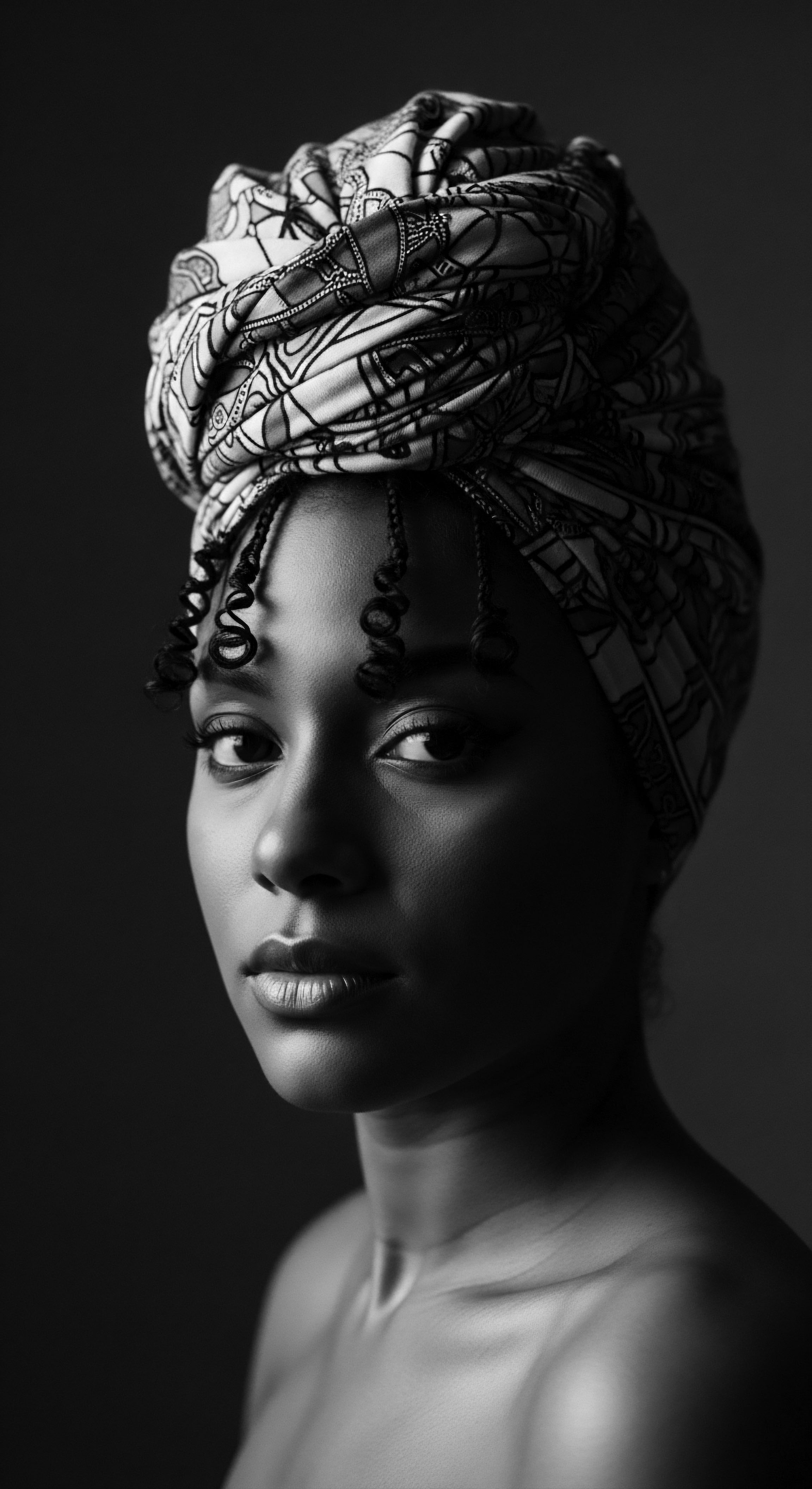
Academic
The academic elucidation of African Cultures, particularly through the lens of textured hair heritage, reveals a complex interplay of anthropological, sociological, and biological forces that have shaped identity, social structures, and resistance movements across centuries. This perspective moves beyond superficial aesthetics to analyze hair as a fundamental component of ontology, a site of power, and a testament to enduring cultural meaning. The very structure of Afro-textured hair, with its unique coil patterns and density, becomes a starting point for understanding how cultural practices developed in concert with biological realities, influencing everything from grooming rituals to spiritual beliefs.
The meaning of African Cultures, from an academic standpoint, is a dynamic concept that acknowledges the continent’s vast ethnic diversity while recognizing shared underlying principles concerning hair. It is a scholarly delineation of how hair has functioned as a primary non-verbal communication system, a repository of ancestral knowledge, and a battleground for self-determination against external forces of subjugation. The academic inquiry into this domain compels a deep analysis of historical narratives, challenging Eurocentric beauty standards that historically pathologized Black hair, and celebrating the resilience of Afrocentric aesthetics.
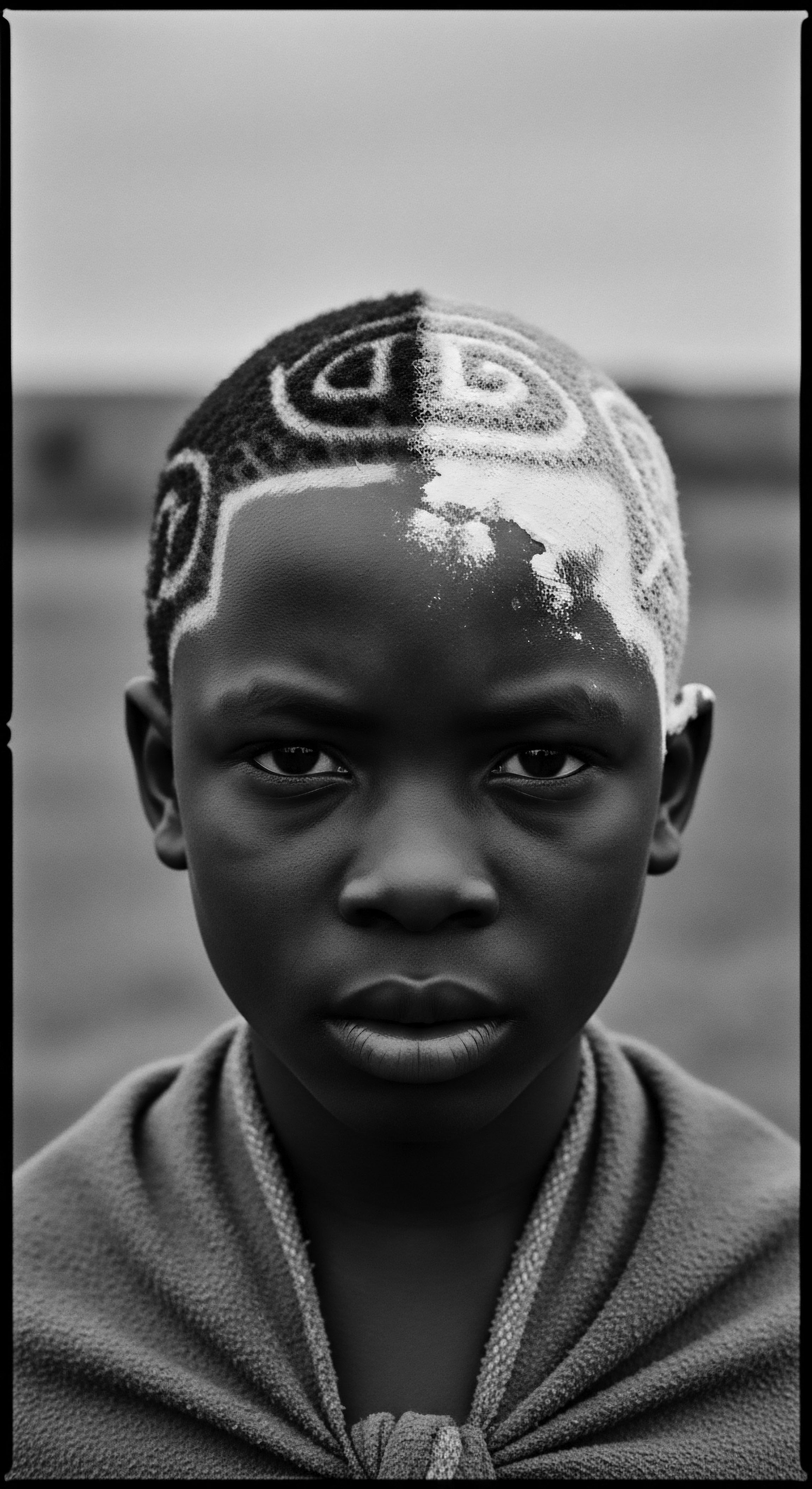
Echoes from the Source ❉ Hair as Ontological and Societal Marker
In pre-colonial African societies, hair was an undeniable marker of one’s place within the cosmos and the community. The Yoruba People of Nigeria, for instance, held the head (and by extension, hair) as the seat of the inner spiritual entity, the ori inu, which governed one’s destiny and life force. Hairstyles were not merely decorative; they were ritualistic expressions, often braided to send messages to deities or to signify spiritual protection. The meticulous and time-consuming process of hair styling, often taking hours or even days, underscored its profound cultural and spiritual value, transforming it into a social occasion that reinforced community bonds.
Beyond spirituality, hair conveyed a comprehensive social lexicon. A person’s hairstyle could indicate their age, marital status, wealth, occupation, or even their tribal affiliation. For example, among the Wolof of Senegal, partially shaved hair on young girls signaled their unmarried status, while the Karamo people of Nigeria were identifiable by a distinctive shaved head with a single tuft of hair.
This sophisticated system of visual communication meant that one could discern a wealth of information about an individual simply by observing their coiffure. The inherent malleability and texture of Black hair allowed for a vast array of styles, each carrying precise denotations within its cultural context.

Hair’s Symbolic Significance in Traditional African Societies
The symbolism embedded in traditional African hairstyles extended to nearly every aspect of life, demonstrating a holistic worldview where the physical body was intimately connected to the spiritual and social realms.
- Status and Rank ❉ Leaders, warriors, and royalty often wore elaborate styles, sometimes adorned with precious materials like gold, beads, or shells, to visibly display their position and authority within the community.
- Life Stages ❉ Specific hairstyles marked rites of passage, such as initiation into adulthood, marriage, or periods of mourning, signifying transitions in an individual’s life journey.
- Spiritual Connection ❉ Hair was seen as a conduit to the divine, with certain styles believed to offer protection from malevolent forces or facilitate communication with ancestors and deities.
- Geographic and Ethnic Identity ❉ Distinctive patterns and techniques allowed for immediate recognition of a person’s tribal or ethnic group, fostering a strong sense of collective identity.

The Unbound Helix ❉ Hair as a Locus of Resistance and Self-Determination
The trauma of the transatlantic slave trade and subsequent colonial periods introduced a stark shift in the experience of African hair. The forced shaving of heads by slave traders served as a deliberate act of dehumanization, a systematic attempt to erase cultural identity and sever ties to ancestral lands. This violent imposition sought to dismantle the deep cultural and spiritual significance hair held, reducing it to a mere physical attribute that could be controlled and suppressed. However, the spirit of African Cultures proved indomitable.
In a profound act of defiance, enslaved Africans transformed their hair into a clandestine tool of resistance. The intricate patterns of Cornrows, which were a common style in many West African societies, became secret maps to freedom. For example, in 17th-century Colombia, the Maroon leader Benkos Biohó, who had escaped slavery, established an intelligence network where women would braid specific cornrow patterns to convey escape routes, meeting points, and even hide seeds for sustenance during their perilous journeys.
This historical instance provides a powerful case study of hair serving as a literal lifeline and a symbol of intellectual and cultural resistance against overwhelming odds. The very act of maintaining these styles, often under harsh conditions and with limited resources, became a quiet yet potent assertion of self and heritage.
Hair, in the face of oppression, became a clandestine map, a hidden pantry, and a silent declaration of an unbroken spirit.
The legacy of this resistance continued through various historical periods. The Tignon Laws of 1786 in Louisiana, for instance, mandated that women of African descent cover their hair with a headwrap, aiming to diminish their perceived social status and curb their influence. Yet, these women transformed the headwraps into elaborate, decorative statements, reclaiming the very symbol of oppression as an expression of pride and cultural continuity.
The mid-20th century saw another powerful resurgence of hair as a political statement during the Civil Rights Movement and the Black Power Movement in the United States. The Afro Hairstyle emerged as a potent symbol of Black pride, unity, and a rejection of Eurocentric beauty standards that had long pathologized natural Black hair. Figures like Angela Davis and the Black Panther Party popularized the Afro, transforming it into an emblem of liberation and a visual declaration of self-acceptance and solidarity with African roots. This era marked a collective decision to embrace the natural texture of Black hair, signifying a profound cultural and political shift.
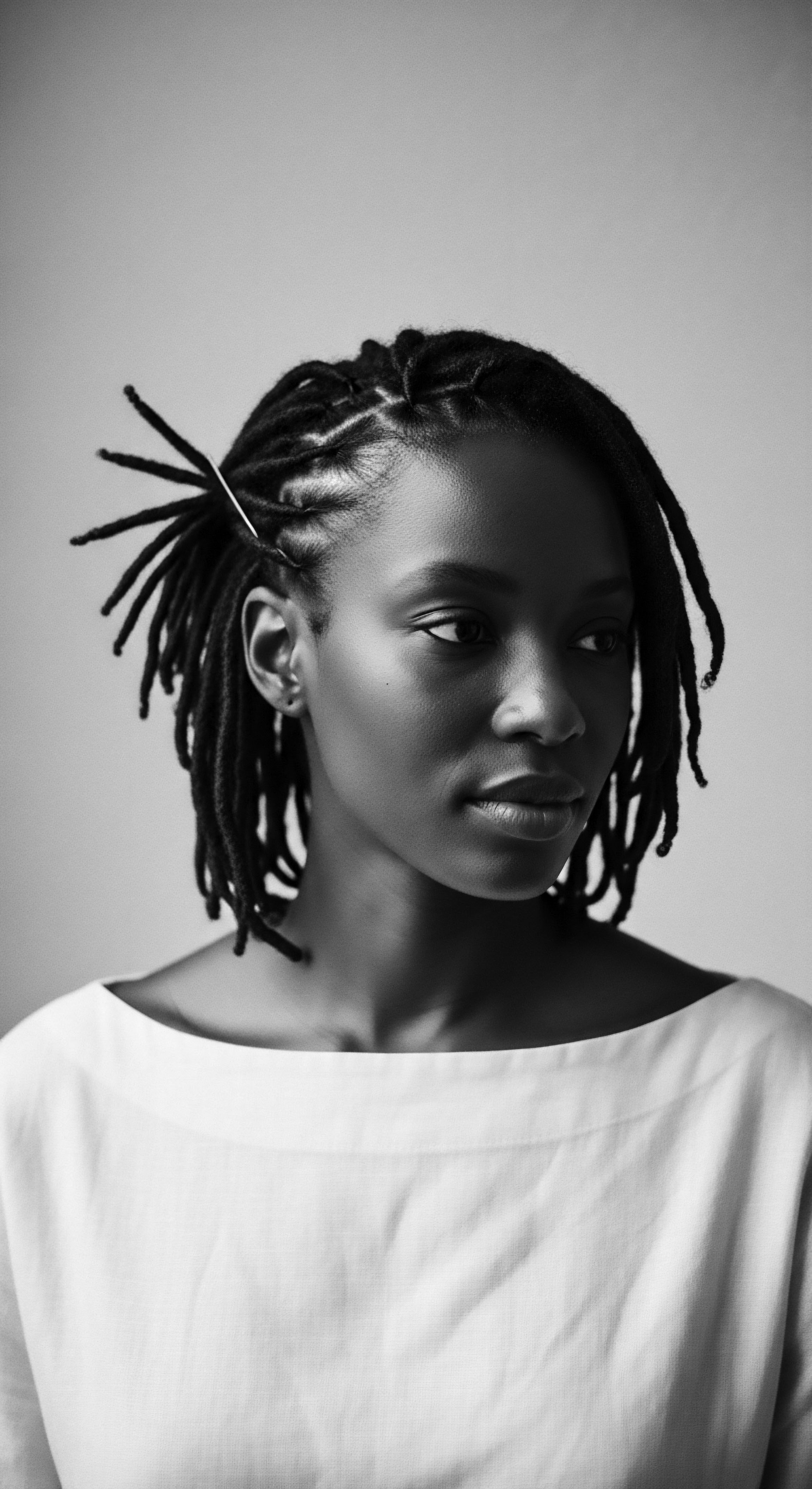
The Evolution of Hair as Political Statement
The journey of Black hair from ancient reverence to a modern symbol of protest and self-love reflects a continuous evolution of its role within African Cultures and the diaspora.
- Pre-Colonial Significance ❉ Hair as a primary identifier of social status, tribal affiliation, age, and spiritual connection.
- Slavery and Dehumanization ❉ Forced shaving and suppression of traditional styles as tools of cultural erasure, leading to hair being hidden or neglected.
- Covert Resistance ❉ Cornrows used as secret maps and repositories for survival items during the transatlantic slave trade.
- Post-Slavery Assertion ❉ The Tignon Laws and subsequent reclamation of headwraps as symbols of dignity and cultural continuity.
- Civil Rights and Black Power Eras ❉ The Afro and other natural styles become powerful statements of Black pride, political defiance, and a rejection of Eurocentric beauty norms.
- Contemporary Natural Hair Movement ❉ A global resurgence of natural hair, celebrating diverse textures and advocating for acceptance and equity in professional and social spaces.
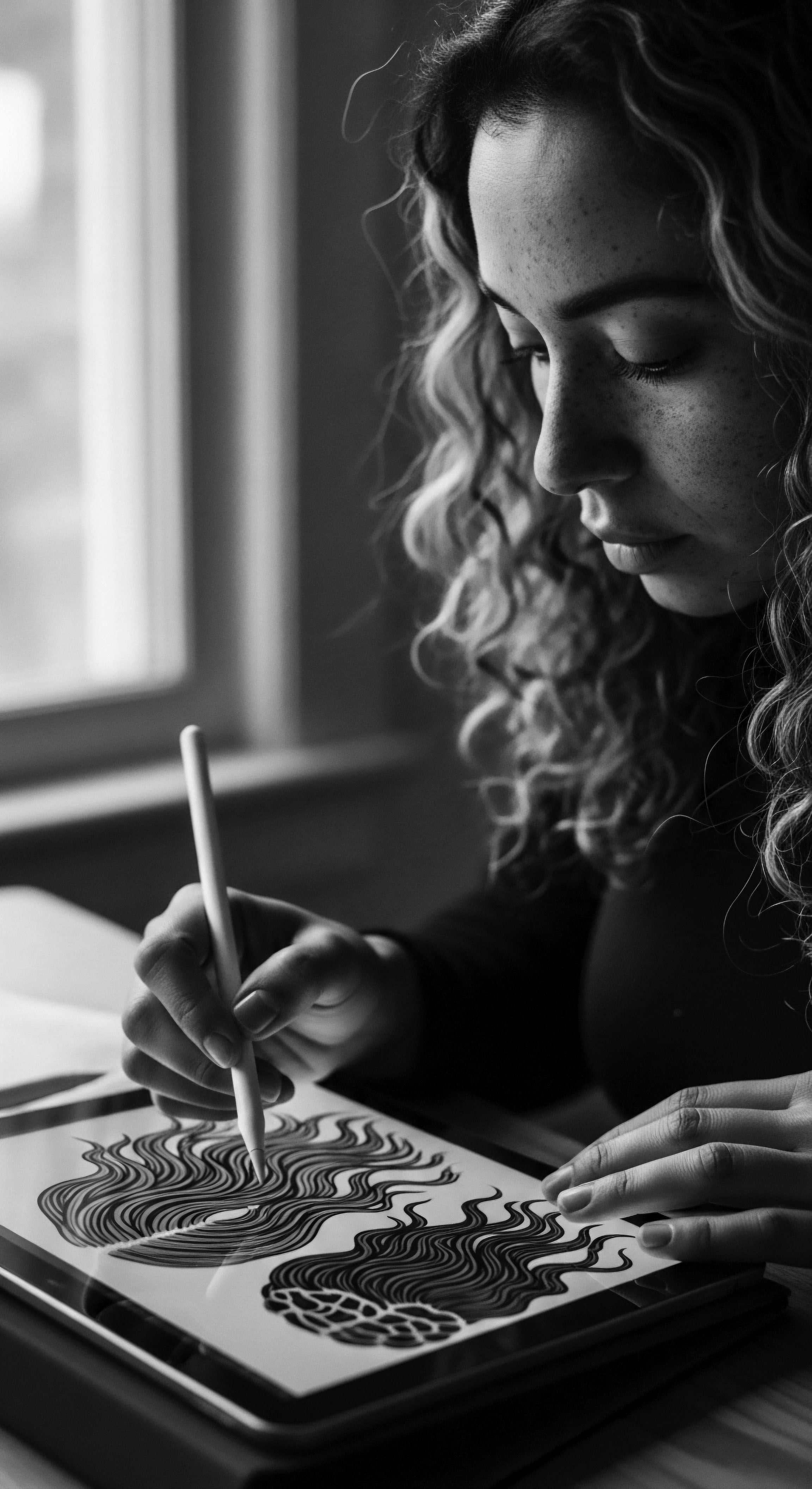
The Science of Textured Hair and Ancestral Wisdom
The unique structural characteristics of Afro-textured hair, including its elliptical cross-section, tighter curl patterns, and fewer cuticle layers compared to other hair types, contribute to its distinct properties. These attributes, while providing natural volume and elasticity, also make it more susceptible to dryness and breakage if not cared for appropriately. This scientific understanding validates the efficacy of ancestral practices centered on moisture retention, protective styling, and gentle handling. The traditional emphasis on oiling, braiding, and communal grooming rituals was, in essence, an intuitive form of hair science, developed through generations of observation and practice.
The contemporary natural hair movement, while seemingly modern, stands as a profound affirmation of these historical and scientific truths. It represents a collective re-engagement with ancestral practices, often informed by modern trichology and dermatology. The focus on moisture, scalp health, and protective styles like braids, twists, and locs, echoes the wisdom passed down through generations. This convergence of ancient wisdom and modern scientific inquiry allows for a deeper, more culturally attuned understanding of textured hair, recognizing its biological needs in harmony with its historical and cultural significance.
The ongoing societal dialogue around hair discrimination, particularly concerning natural Black hairstyles in professional and educational settings, highlights the continued political dimension of textured hair. Despite historical movements and scientific validation of natural hair’s beauty and health, biases rooted in Eurocentric beauty standards persist. This underscores that the definition of African Cultures, as expressed through hair, is not static; it is a living, evolving concept that continues to assert its inherent value and demand respect in the global landscape. The fight for hair acceptance is a fight for cultural recognition and human dignity, a continuation of the ancestral journey towards liberation and self-expression.
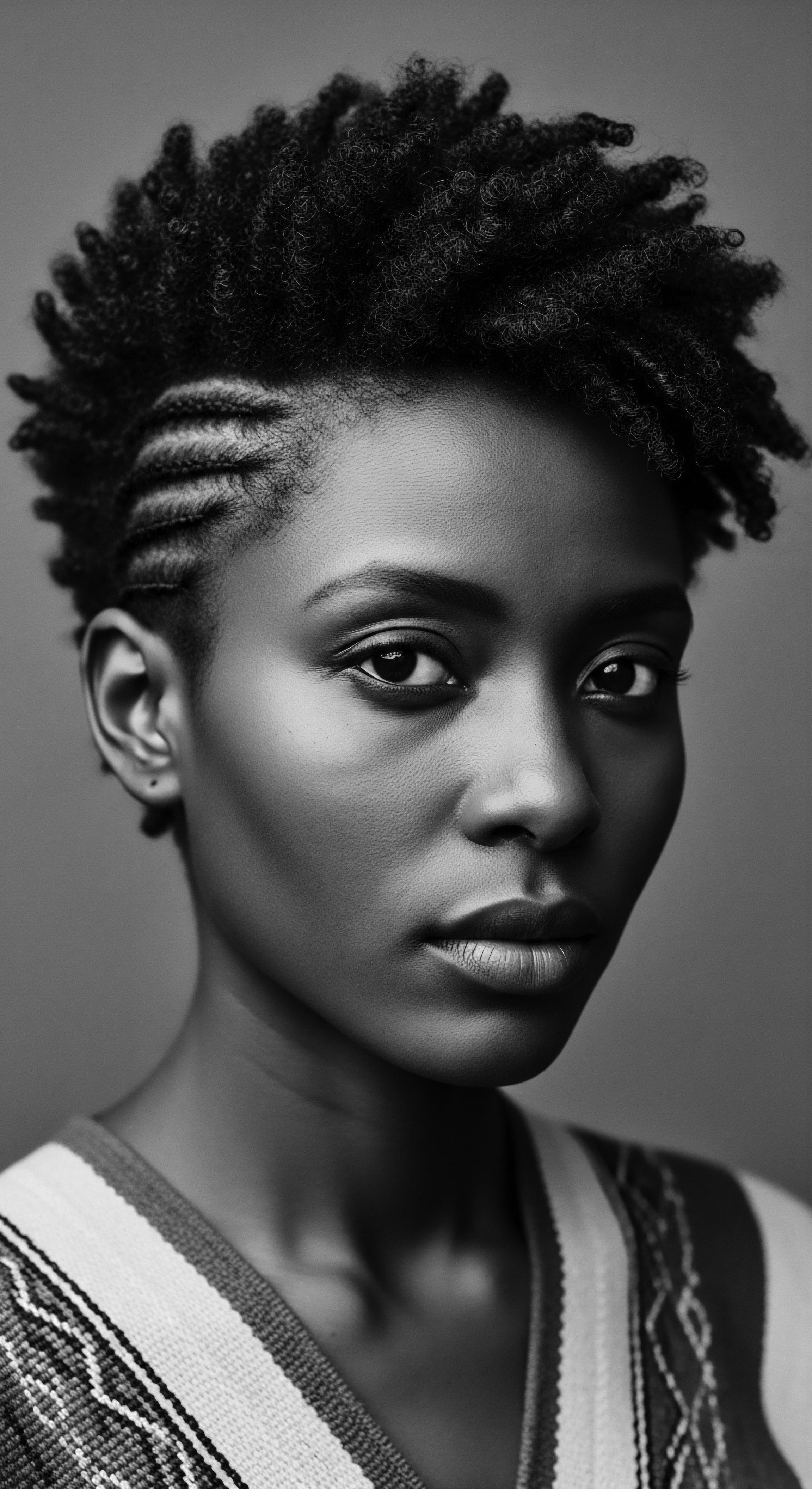
Reflection on the Heritage of African Cultures
As we draw our exploration to a close, the enduring presence of African Cultures, particularly as manifested through the radiant heritage of textured hair, remains a powerful testament to the human spirit’s capacity for adaptation, creation, and enduring identity. The journey of a single strand, from its coiled origin to its sculpted form, tells a story far grander than mere aesthetics; it speaks of spiritual devotion, communal bonds, silent acts of resistance, and a continuous lineage of wisdom passed from elder to child. Roothea’s ‘living library’ strives to hold this truth, honoring each curl, coil, and braid as a chapter in an ongoing chronicle of beauty, resilience, and profound cultural connection.
The whispers of ancient styling rituals, the ingenious use of natural botanicals, and the coded messages hidden within cornrows during times of trial all converge to paint a picture of hair as a sacred repository of collective memory. This heritage is not confined to the past; it breathes in every natural hairstyle celebrated today, in every communal braiding session, and in every individual’s decision to wear their crown with unapologetic pride. It reminds us that care for textured hair is not just about physical health; it is a profound act of self-reverence, a nod to those who came before, and a hopeful declaration for those who will follow. The African Cultures, seen through this lens, is a vibrant, unbroken circle of ancestral wisdom, continuing to shape identity and inspire generations to come.

References
- Byrd, A. & Tharps, L. L. (2001). Hair Story ❉ Untangling the Roots of Black Hair in America. St. Martin’s Press.
- Jacobs-Huey, L. (2006). From the Kitchen to the Salon ❉ Black Women’s Hair Care Culture. Rutgers University Press.
- Mercer, K. (1994). Welcome to the Jungle ❉ New Positions in Black Cultural Studies. Routledge.
- Patton, T. O. (2006). Brave. Black. First. ❉ 50+ True Tales of Black Girl Magic. Simon & Schuster.
- Rooks, N. M. (1996). Hair Raising ❉ Beauty, Culture, and African American Women. Rutgers University Press.
- Thompson, A. (2009). Black Women and the Politics of Hair. Peter Lang.
- Johnson, R. A. & Bankhead, T. (2014). Black Hair ❉ A Cultural and Historical Examination. Journal of Pan African Studies, 7(3), 87-101.
- Dove, J. & Powers, L. (2018). Hair, Race, and Identity ❉ A Sociological Examination of the Black Hair Experience. Sociology Compass, 12(11), e12635.
- Mbodj, M. (2020). The Significance of Hair in African Culture. Columbia University. (Cited in Okan Africa Blog, 2020).
- Boone, S. A. (1986). Radiance from the Waters ❉ Ideals of Feminine Beauty in Mende Art. Yale University Press.
- Gordon, M. (2018). The Spiritual Significance of Hair in Ancient African Civilizations. Journal of Pan African Studies. (Cited in The Gale Review, 2021).
